Creating and Deleting Variables
Reading time ~3 minutes
Cinegy Title scenes can be used as templates which can be triggered by the Cinegy Air automation. Declared variable parts of the templates can be updated either manually or automatically.
Cinegy Title Editor offers the possibility to use variables. They are used for changing the parameters values in one place on a separate tab rather than having to change them in different places. These variables can also be exported to be directly edited in Cinegy Air from the control panel before playout.
Creating a Variable
Some parameters controls have a ![]() sign near them. It means that this parameter can be linked with a variable. Press this icon for the drop-down menu to appear:
sign near them. It means that this parameter can be linked with a variable. Press this icon for the drop-down menu to appear:

Select the "Create new…" command to create a new variable for this parameter. The icon will change to ![]() symbolizing that this parameter is linked with the variable. It will also be added to the list of the variables in the "Variables" tab:
symbolizing that this parameter is linked with the variable. It will also be added to the list of the variables in the "Variables" tab:
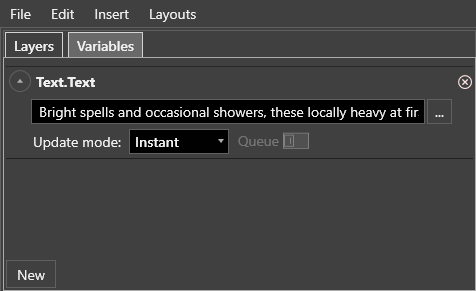
It is also possible to create a new variable directly in the "Variables" tab. Press the "New" button and specify the type of the variable from the drop-down list that appears:

Depending on the selected variable type, specify its value. You can also change the default variable name by double-clicking its default name.
To rename the variable, double-click the default name and enter a new one:

Having created a new variable, you can link it with the parameter of the corresponding type. To do this, press the ![]() icon next to this parameter and select the variable from the "Link" context menu:
icon next to this parameter and select the variable from the "Link" context menu:
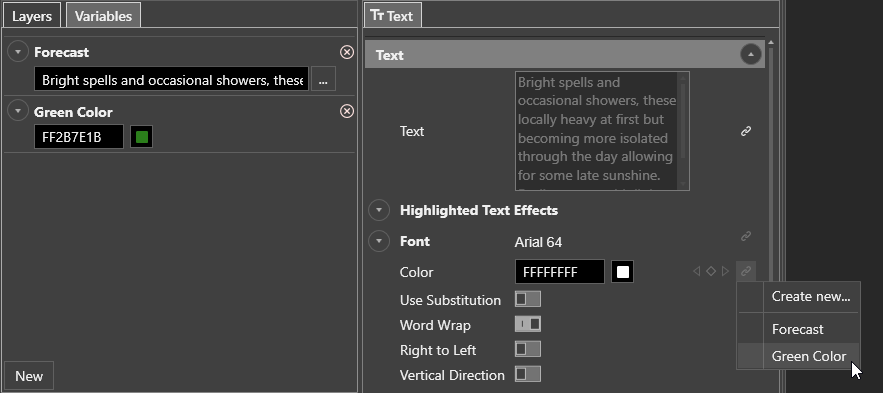
|
Tip
|
Many items can link to one variable. For example, two distinct text objects can be set to the same name parameter, or have their color controlled from a single color variable. |
String Variables
If a variable of the "String" type contains long text, just one line with the beginning of the text will be displayed along with the "…" button that opens the extended text window:
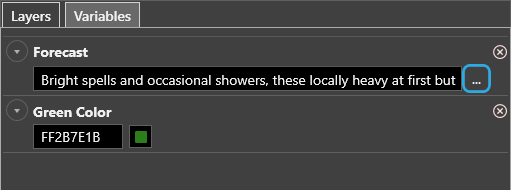
In this window the variable text can be edited:
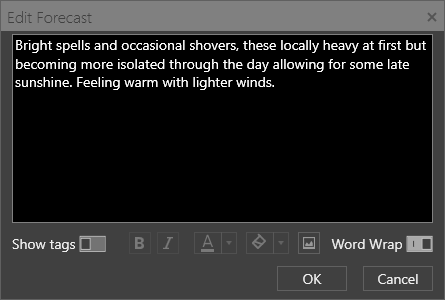
|
Important
|
Refer to the Highlighted Text Effects section for detailed description of text formatting and using tags. |
|
Tip
|
Tick off the "Word Wrap" option to split long text into lines without actual line breaks within the text area. |
The variables of the "String" type can contain various metadata references, such as the item and program name, their scheduled times, comments, descriptions, etc. To include this information in the variable text, type in the $ symbol and select a corresponding macro from the drop-down list:
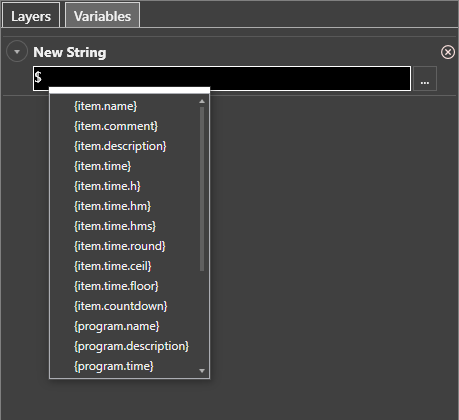
Linking a Variable to File
It is possible to link any parameter to the variable of the "File" type. The variable value is read from the file and applied for the parameter. If the file is updated or overwritten, the variable value is automatically updated. One file can be linked to several different parameters of the corresponding type.
|
Caution
|
Be sure to link the parameter to the file of corresponding type otherwise you will receive the error message. |
For this, create the variable of "File" type on the "Variables" tab and define the file by pressing the "…" button. Then choose the parameter which will take the value from the defined file and link it with a newly created variable.
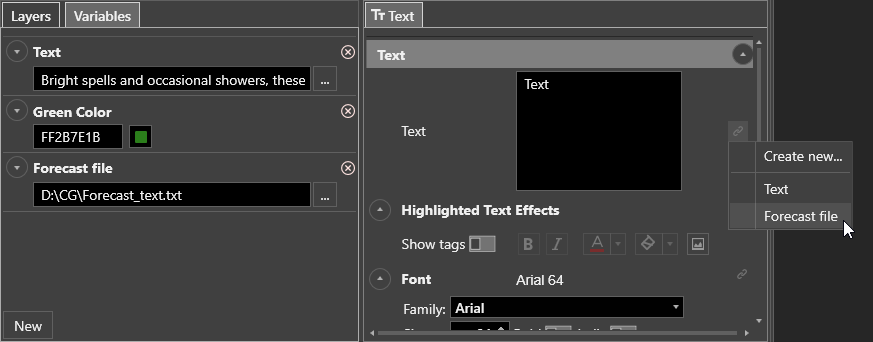
Unlinking a Variable
To unlink the defined parameter from the variable, press the ![]() button near it and choose the "Unlink" command from the drop-down menu:
button near it and choose the "Unlink" command from the drop-down menu:
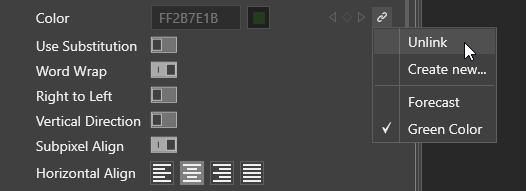
Deleting a Variable
To delete a specified variable, press the "Remove" button:
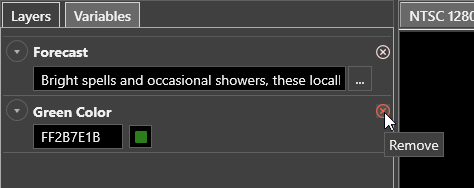
If this variable is linked with the parameter, the following dialog box will appear asking you to confirm your decision:
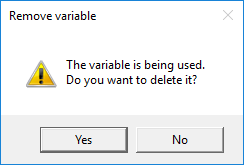
If this variable is deleted, the linked parameters will become unlinked, and the values will be set to the last variable value.